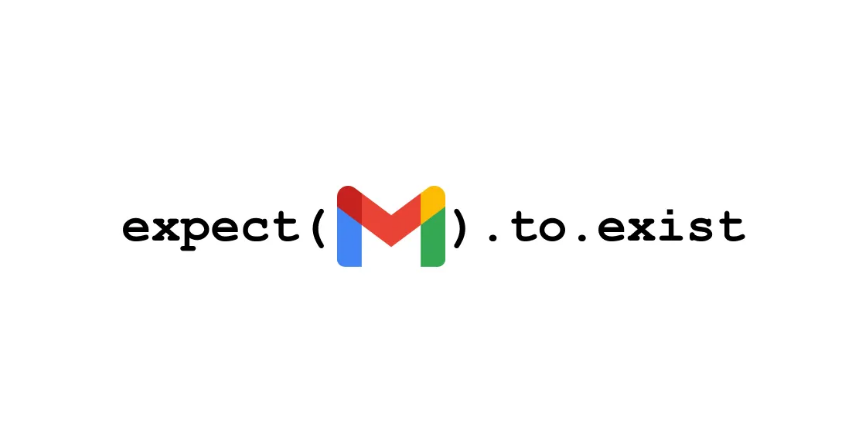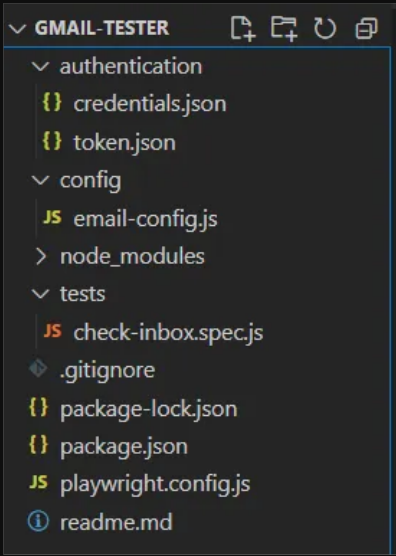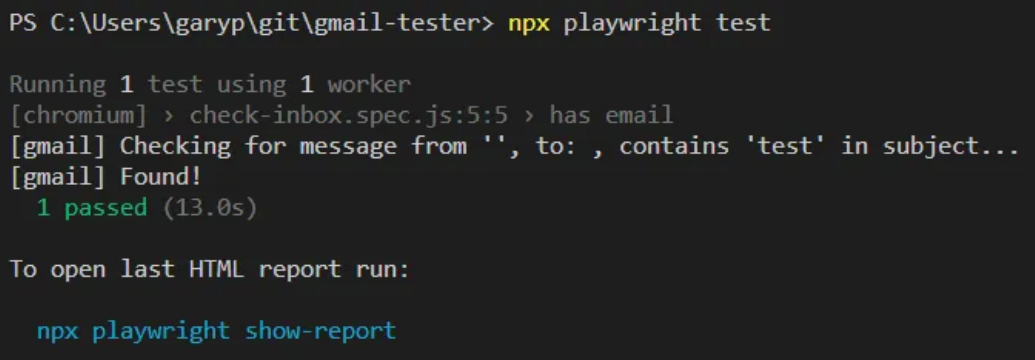
Introduction
We will be creating some simple tests for email verification — if you work with systems that trigger emails and you need to verify the receipt of them, this setup is what you need.
Prerequisites
- Visual Studio Code
- Playwright
- Node.js
- An OAuth2 Authentication file from https://console.cloud.google.com/apis/credentials, full details on this process can be found here: https://www.npmjs.com/package/gmail-tester
Commands
The credentials.json is where we will store the values from the OAuth2 Authentication file.
To generate the token.json we need to run the following command:
node node_modules/gmail-tester/init.js credentials.json token.json my-email-address@gmail.com
It’s executed using node — and the script being executed is at this path within your project: node_modules/gmail-tester/init.js
Replace the email address with the one you want to use (this should be the same one used to generate your authentication file)
Project structure
Once you have the authentication files required, this is how I’d suggest structuring your project.
If you plan to push this to a repository, make sure to store the authentication and any other sensitive data elsewhere / as secrets.

Authentication
This is where we will store our credentials.json:
{
"installed":{
"client_id":"",
"project_id":"",
"auth_uri":"https://accounts.google.com/o/oauth2/auth",
"token_uri":"https://oauth2.googleapis.com/token",
"auth_provider_x509_cert_url":"https://www.googleapis.com/oauth2/v1/certs",
"client_secret":"",
"redirect_uris":[
"http://localhost"
]
}
}And our token.json:
{
"access_token":"",
"refresh_token":"",
"scope":"https://www.googleapis.com/auth/gmail.readonly",
"token_type":"Bearer",
"expiry_date":
}Config
The email-config is where we will be storing our parameters for verification, such as subject, from, to.
We will also set values for polling wait_time_sec and maximum wait time max_wait_time_sec.
import path from "path";
import { fileURLToPath } from "url";
const __dirname = path.dirname(fileURLToPath(import.meta.url));
// config.js
export default {
credentialsPath: path.resolve(__dirname, "credentials.json"),
tokenPath: path.resolve(__dirname, "token.json"),
options: {
subject: "test email",
from: "my-email-address@gmail.com",
to: "my-email-address@gmail.com",
wait_time_sec: 10,
max_wait_time_sec: 30,
include_body: true
}
};Test file
It's a simple assertion, to check our options structured email is in the inbox.
import gmail from "gmail-tester";
import config from "./config.js";
import { test, expect } from '@playwright/test';
test('has email', async () => {
const email = gmail.check_inbox(config.credentialsPath, config.tokenPath, config.options);
expect(await email).toBeTruthy();
});Running the test
Execution is fairly quick and confirms that the email has been found.

Conclusion
This is a simple foundation for building a full email verification test suite. It should enable you to remove the manual process of checking and verifying email integrations.